Lawn Gone! Part Four
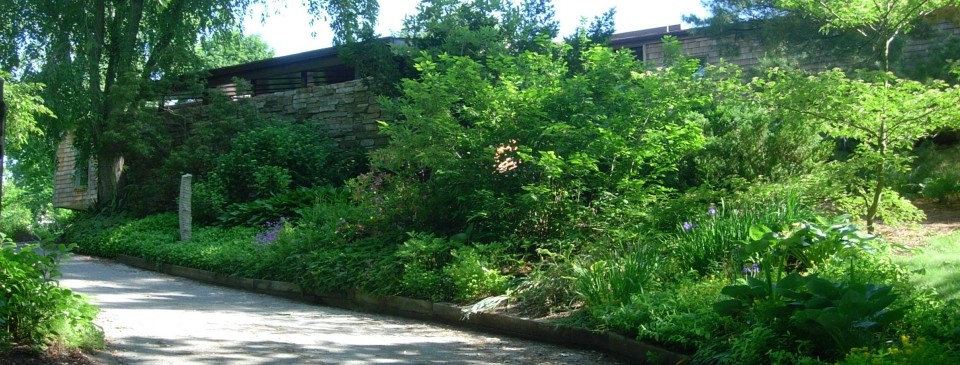
What about the neighbors and The Law? In addition to the inertia to overcome to get started on a new project, and, worrying that you don’t know exactly how to do it, replacing lawn grass with real plants has the potential concern that the neighbors may not like what you’re doing and it may run afoul of local homeowners’ agreements or building codes. Let’s say at the outset, that these problems have never been much of an issue, and are increasingly not a problem at all, as more and more homeowners get the message.
To start out, why not begin your plans in the back or the side of the property, instead of the front yard? In most circumstances, the neighbors will love seeing more blooming perennials and shrubs and new trees as a plus. Simply cleaning out invasive ivy and other vines from your yard is a contribution to theirs. Do consider that you shouldn’t plant a new big tree right on the other side of the fence from their swimming pool, where its leaf fall will annoy them.
We encourage talking to the neighbors about your plans before and during. Let them know what’s coming and why. Some years ago, we finally tired of deer eating everything good in the yard. One night they devoured 3 full-sized shrubs to the nubs. Our responses with coyote urine spray, “deer-resistant” plants, and stringing nylon fishing line between trees were useless. We wanted a fence—high enough that it would discourage them from jumping it. Even though the yard had a number of trees and the fence would be 20 feet inside the property line, it was going to be visible as people walked and drove by. There would be a gate on the driveway that we close each night (deer are crepuscular beasts so it stays open all day when most people see the gate). Note the patch of lawn in right foreground of the picture.
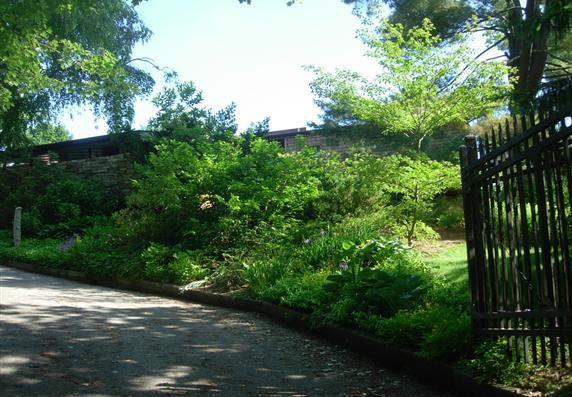
Better than lawn
We chose a dark bronze color for the metal aluminum fence to minimize its visibility. At over 6 feet high, it exceeded the local Baltimore City building code height, so we needed to ask for a building permit. In preparation for that, I visited each of the nearby neighbors with pictures of the fence type and a little map of where it would be. All had been munched by the local horde of deer and were sympathetic. One wished to be sure that it didn’t encroach the joint property line. But, the fact that all neighbors were at least not against it actually helped at the city permit office. 4 years later, our garden won the local “Best Garden in the City” award, and several neighbors have come to walk the yard and admire.
Clearly, you don’t want to go to extremes. We’ve heard of people planting a prairie in the front yard with grasses higher than the home’s windows. And they want to burn it to stimulate the grass’ growth every 3 years. Don’t kill and remove everything in the yard all at once so it looks like an Agent Orange attack from the Vietnam War.
We find that giving out plants that are surplus in our yard is a great mollifier and friendship builder in the local zone. The illustration picture here shows just one days potting up of babies that we got from our existing beds. We have a sign in the front from the National Wildlife Federation that the yard is a Backyard Wildlife Habitat. You, too, can apply for this status if you go to their website (see Nerd Food for Further Reading below).
As to local ordinances on lawns, the idea behind most of them is that you shouldn’t have long, uncut grass. Doesn’t apply to shrubs. The laws don’t say how MUCH lawn you have, just how you care for it. We’re advocating replacing it with other plants. In fact, one of the only 2 spots of grass left in our 2/3 acre is the one spot visible from the street alongside the driveway. We cut that in 10 minutes with a human-powered push mower.
Your local community probably has regular meetings of some sort. Get together with a couple of other couples and make it a conversation topic that you’re thinking to (or already have) changed a little bit of your yard from grass to other things. Bring plants to give out as party favors.
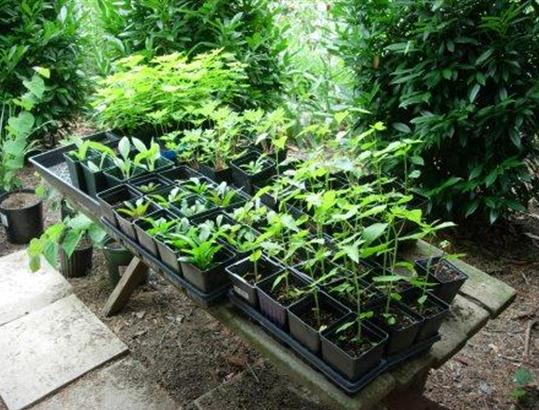
Soon you have more plants than you can use. Give them to the neighbors!
Nerd Food for Further Reading
Garden for Wildlife: Making Wildlife Habitat at Home from the National Wildlife Federation
The National Wildlife Federation website to begin having your yard certified as more friendly to birds, bees, butterflies, and (yes) snakes, frogs, and smaller mammals. they have lots of good easy and relatively inexpensive ways that you can increase diversity and enjoy your yard more.

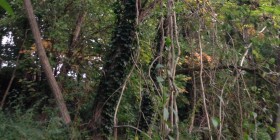
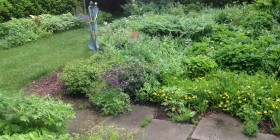
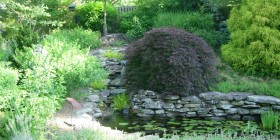
No comments yet.